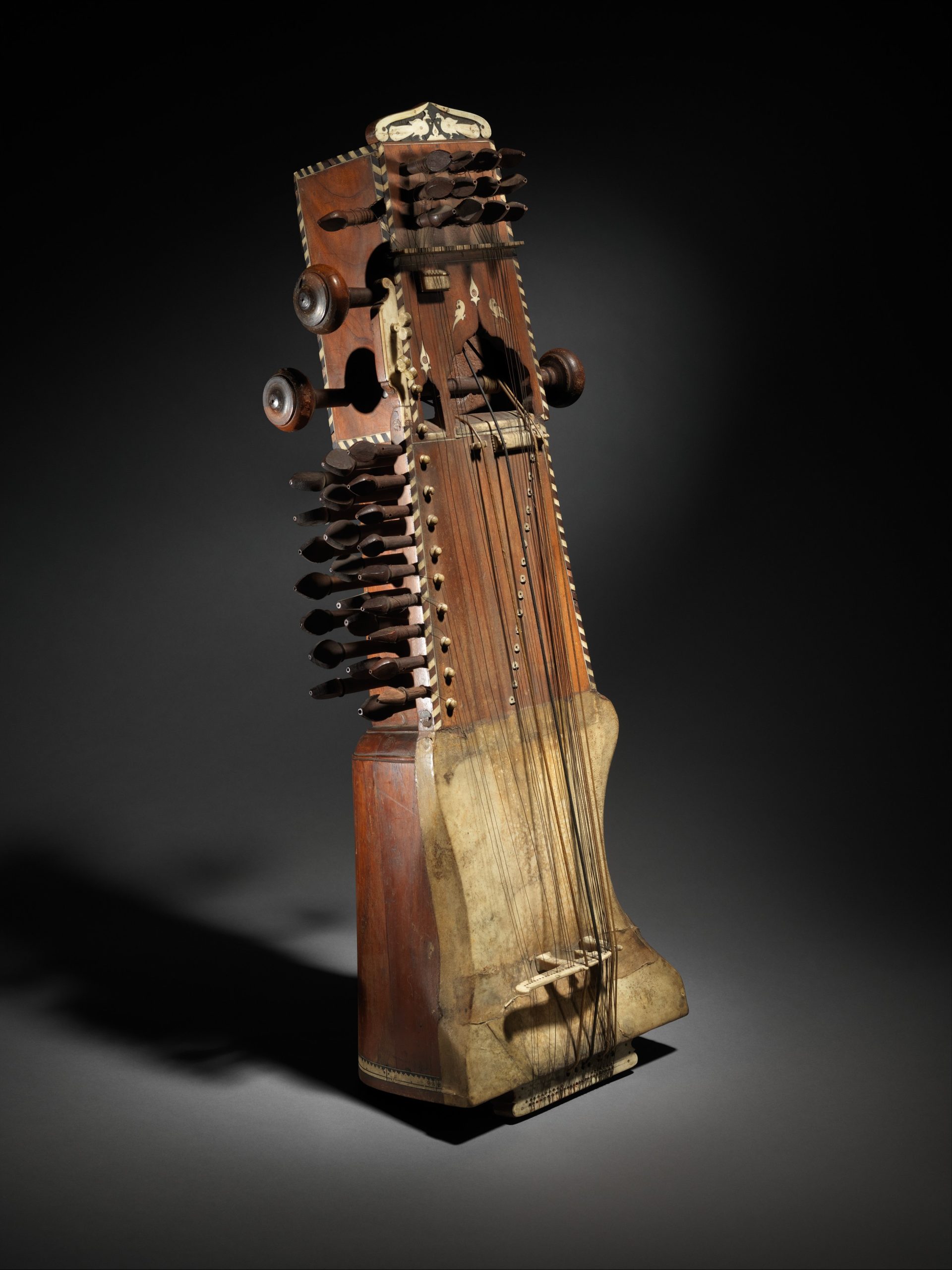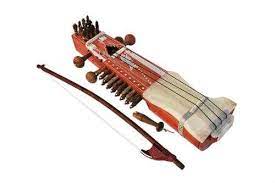Sarangi
Bowed Instruments
Asia
Between 1001 and 1900 AD
Video
The sarangi is a traditional bowed string instrument that holds a significant place in the musical heritage of India. Known for its rich, emotive sound, it is often regarded as one of the closest instruments to the human voice, capable of expressing a wide range of emotions through its unique tonal qualities.
History of the Sarangi
The origins of the sarangi can be traced back to ancient India, with its roots deeply embedded in the musical traditions of South Asia. While the exact timeline of its inception remains unclear, it is believed to have emerged around the 13th century during the period of Muslim rule in India. The instrument likely evolved from various folk instruments prevalent in Rajasthan and surrounding regions. Over centuries, it has undergone significant modifications and refinements, leading to its current form. The sarangi is primarily associated with Hindustani classical music but has also found a place in various folk traditions across India and Nepal. Its name translates to “one hundred colors,” reflecting its versatility and expressive potential. The instrument’s ability to mimic vocal nuances has made it a preferred choice for accompanying vocal performances, particularly in genres like khyal and thumri.
How the Sarangi Works
The sarangi typically features three main melody strings made from gut, which are tuned a fifth and a fourth apart. In addition to these strings, it possesses a varying number of sympathetic strings—often between 11 to 37—that resonate alongside the melody strings. This configuration allows for a rich harmonic texture that enhances the overall sound. To play the sarangi, musicians adopt a seated posture, cradling the instrument against their left shoulder in a vertical position. The right hand wields an arched bow held in an underhand grip, while the left-hand uses cuticles or fingernails to press against the strings, producing specific pitches. This technique enables players to execute intricate slides (meends) and ornamentations (gamaks), closely resembling vocal expressions.
Types and Features of the Sarangi
Types
Hindustani Sarangi: The most common form used in classical music settings.
Nepali Sarangi: A folk variant with distinct characteristics, often played by the Gaine or Gandarbha ethnic groups.
Folk Sarangi: Variants found in various regional folk traditions across India.
Features
Construction: Traditionally carved from a single block of wood (often red cedar), the sarangi has a box-like shape with three resonating chambers named after body parts: pet (stomach), chhaati (chest), and magaj (brain).
Strings: Consists of three main melody strings and numerous sympathetic strings that enhance resonance.
Playing Technique: Requires skilled finger techniques for pressing strings and bowing methods that produce expressive sounds.
Music Composed for the Sarangi
The repertoire for sarangi players is traditionally intertwined with vocal music. Performances often include extensive improvisations known as alap, followed by compositions called bandish, which vary in tempo and complexity. The sarangi’s ability to replicate vocal nuances makes it particularly effective in conveying emotional depth in compositions. Musicians frequently perform ragas—melodic frameworks used in Indian classical music—allowing for improvisation within specific rules. This improvisational aspect showcases the musician’s creativity and skill while maintaining adherence to traditional structures.
Significance of the Sarangi
The sarangi holds immense cultural significance in India as both a solo instrument and an accompaniment for vocalists. It has been an integral part of Hindustani classical music for centuries, contributing to its rich tapestry of sound. Notably, renowned musicians such as Pandit Ram Narayan have elevated the status of the sarangi through their virtuoso performances. Despite its historical prominence, the sarangi faced challenges during the late 19th and early 20th centuries due to the rise of other instruments like the harmonium and violin. However, dedicated efforts by enthusiasts have aimed to revive interest in this unique instrument through performances and educational initiatives. In contemporary times, the sarangi continues to inspire musicians across genres, fostering collaborations that blend traditional sounds with modern influences. Its distinct voice remains a cherished element within India’s musical landscape.
The sarangi is more than just an instrument; it is a vessel of emotion that connects listeners with India’s rich musical heritage. Its intricate construction, expressive capabilities, and deep-rooted history make it an essential part of South Asian culture. As efforts continue to preserve this remarkable instrument, its legacy will undoubtedly endure for generations to come.
FAQ
What type of instrument is the Sarangi?
The Sarangi is a bowed string instrument used primarily in Indian classical music, known for its rich, emotive tone resembling the human voice.
What material is used to make the body of a Sarangi?
The Sarangi is typically crafted from a single block of tun (red cedar) wood, which gives it durability and acoustic richness.
What are the strings of the Sarangi made of?
The Sarangi has gut strings, often made from goat intestines, and metal sympathetic strings that enhance its resonance.
 Links
Links
References
Other Instrument
Categories




















